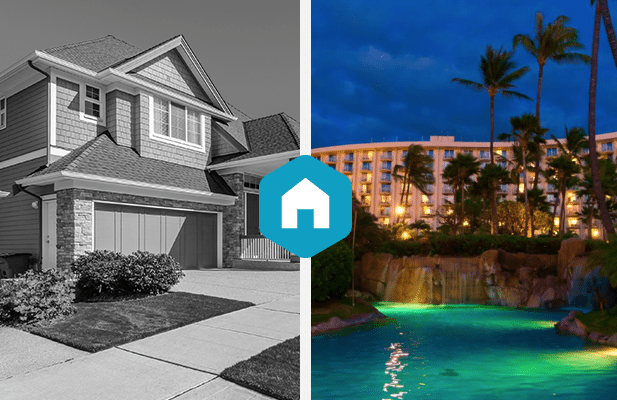Most likely among the most complicated aspects of mortgages and other loans is the calculation of interest. With variations in compounding, terms and other factors, it's hard to compare apples to apples when comparing mortgages. In some cases it looks like we're comparing apples to grapefruits. For example, what if you desire to compare a 30-year fixed-rate mortgage at 7 percent with one indicate a 15-year fixed-rate mortgage at 6 percent with one-and-a-half points? First, you have to remember to also think about the costs and other costs related to each loan.
Lenders are needed by the Federal Truth in Loaning Act to divulge the effective percentage rate, as well as the total finance charge in dollars. Ad The yearly percentage rate (APR) that you hear so much about enables you to make real comparisons of the actual expenses of loans. The APR is the typical annual financing charge (which consists of charges and other loan costs) divided by the quantity obtained.
The APR will be somewhat greater than the interest rate the loan provider is charging due to the fact that it consists of all (or most) of the other costs that the loan brings with it, such as the origination fee, points and PMI premiums. Here's an example of how the APR works. You see an advertisement offering a 30-year fixed-rate home mortgage at 7 percent with one point.
Easy choice, right? In fact, it isn't. Fortunately, the APR considers all of the great print. State you need to obtain $100,000. With either loan provider, that means that your regular monthly payment is $665.30. If the point is 1 percent of $100,000 ($ 1,000), the application fee is $25, the processing fee is $250, and the other closing charges amount to $750, then the total of those costs ($ 2,025) is subtracted from the real loan quantity of $100,000 ($ 100,000 - $2,025 = $97,975).
To find the APR, you figure out the rates of interest that would relate to a monthly payment of $665.30 for a loan of $97,975. In this case, it's really 7.2 percent. So the 2nd loan provider is the much better offer, right? Not so quickly. Keep checking out to discover the relation between APR and origination charges.
When you purchase a home, you might hear a little bit of market lingo you're not knowledgeable about. We have actually produced an easy-to-understand directory site of the most common home mortgage terms. Part of each regular monthly home loan payment will go towards paying interest to your lender, while another part goes toward paying down your loan balance (likewise known as your loan's principal).
During the earlier years, a greater portion of your payment goes towards interest. As time goes on, more of your payment goes toward paying for the balance of your loan. The down payment is the cash you pay upfront to buy a house. In many cases, you need to put money down to get a home mortgage.
For instance, traditional loans need just 3% down, but you'll have to pay a regular monthly cost (understood as private home mortgage insurance) to make up for the little deposit. On the other hand, if you put 20% down, you 'd likely get a much better rates of interest, and you wouldn't have to pay for private home mortgage insurance.
Part of owning a house is paying for real estate tax and homeowners insurance coverage. To make it easy for you, lenders set up an escrow account to pay these expenditures. Your escrow account is handled by your lending institution and functions type of like a checking account. Nobody earns interest on the funds held there, but the account is utilized to collect cash so your lender can send out payments for your taxes and insurance coverage on your behalf.
Not all home mortgages feature an escrow account. If your loan doesn't have one, you need to pay your real estate tax and house owners insurance bills yourself. However, a lot of loan providers provide this alternative due to the fact that it permits them to ensure the residential or commercial property tax and insurance expenses get paid. If your down payment is less than 20%, an escrow account is needed.
Keep in mind that the quantity of cash you require in your escrow account is dependent on how much your insurance coverage and residential or commercial property taxes are each year. And given that these costs may alter year to year, your escrow payment will change, too. That suggests your month-to-month mortgage payment may increase or decrease.
There are 2 types of home mortgage interest rates: fixed rates and adjustable rates. Fixed interest rates remain the same for the entire length of your home loan. If you have a 30-year fixed-rate loan with a 4% rate of interest, you'll pay 4% interest up until you pay off or re-finance your loan.

Adjustable rates are rate of interest that alter based on the market. The majority of adjustable rate home mortgages begin with a fixed rate of http://simonwdpq796.theglensecret.com/how-to-cancel-a-timeshare-contract-in-florida interest duration, which typically lasts 5, 7 or ten years. Throughout this time, your interest rate remains the exact same. After your set rates of interest period ends, your interest rate changes up or down once each year, according to the marketplace.

ARMs are best for some borrowers. If you prepare to move or refinance before completion of your fixed-rate duration, an adjustable rate mortgage can offer you access to lower interest rates than you 'd usually find with a fixed-rate loan. The loan servicer is the business that's in charge of offering regular monthly home loan statements, processing payments, managing your escrow account and reacting to your queries.
Lenders may offer the maintenance rights of your loan and you might not get to pick who services your loan. There are numerous kinds of home loan. Each includes various requirements, rate of interest and benefits. Here are a few of the most common types you may hear about when you're making an application for a mortgage.
You can get an FHA loan with a down payment as low as 3.5% and a credit rating of just 580. These loans are backed by the Federal Real Estate Administration; this indicates the FHA will repay loan providers if you default on your loan. This minimizes the threat loan providers are handling by providing you the cash; this suggests loan providers can offer these loans to debtors with lower credit rating and smaller sized down payments.
Conventional loans are frequently likewise "adhering loans," which implies they meet a set of requirements defined by Fannie Mae and Freddie Mac two government-sponsored business that purchase loans from loan providers so they can provide mortgages to more people. Standard loans are a popular choice for buyers. You can get a standard loan with just 3% down.
This contributes to your month-to-month costs however allows you to get into a new home earlier. USDA loans are just for homes in qualified backwoods (although many houses in the suburbs certify as "rural" according to the USDA's definition.). To get a USDA loan, your home earnings can't surpass 115% of the location typical income.